SUMMARY
This is AI generated summarization, which may have errors. For context, always refer to the full article.
![[ANALYSIS] Did you know you’re paying for police, military pensions?](https://www.rappler.com/tachyon/2023/08/TL-paying-military-police-pensions-August-4-2023.jpg)
If there’s one thing I agree on with President Ferdinand Marcos Jr.’s technocrats, it’s the urgent need to reform the military and uniformed personnel (MUP) pension system.
As Finance Secretary Benjamin Diokno has been saying all along (as early as 2013, in fact), MUPs – which comprise personnel of the Armed Forces of the Philippines (AFP), Philippine National Police (PNP), Philippine Coast Guard (PCG), Bureau of Fire Protection (BFP), Bureau of Jail Management and Penology (BJMP), and the Bureau of Corrections (BuCor) – pay zero for their own pensions.
In stark contrast, ordinary employees like you and me contribute to our pensions directly from our monthly salaries, with deductions made for the Social Security System (SSS) or the Government Service Insurance System (GSIS).
So where do MUPs’ pensions come from? Straight from the national budget, funded by our taxes and government borrowings – all of which are paid for by you and me.
On the one hand, the rationale is that the MUPs’ bravery and service to the nation deserve to be well compensated.
But is this a fair system? What about the pensions of civil servants? Are their contributions to the country somehow less important, so that they have to pay for their own pensions?
MUPs are really quite privileged a privileged class. For instance, MUPs retire at just 56 years old, not 65, and therefore start to enjoy their pensions at a relatively younger age. They can even get their pensions as early as their 40s, once they have served for at least 20 years.
What’s more, pension benefits going to survivors of MUPs are much higher than those going to the survivors of civil servants.
And what about the rest of the workers in the private sector? Are they even aware that they’re paying for MUPs’ pensions using their hard-earned money?
Apart from equity concerns, there’s an issue as well with the sheer size of MUP pensions.
They’re quite big, and they will balloon to unsustainable levels in the coming years and decades – eating away at the budgets for key public programs and projects.
Why the rise?
Many factors caused this ballooning.
First, on January 9, 2018, former president Rodrigo Duterte fulfilled a campaign promise by signing a law doubling the base pay of MUPs.
Second, MUP pensions have long been indexed to the base pay and longevity of those in active service. So, as a result of Duterte’s policy, pensions have also doubled.
Third, the law provides that when MUPs retire, they’re automatically promoted one rank higher – a privilege not enjoyed by those in the civil service. With the indexing of pensions and the doubling of base pay, this means more pension obligations on the part of government.
As a result of all this, studies show that as of 2022, the average MUP pension is about P40,049 a month. That’s nearly 9 times as high as average pensions under the SSS (P4,528), and nearly thrice the average pensions under GSIS (P13,600).
Fiscal cliff
More significantly, all of this is a recipe for fiscal disaster.
First, in 2023, total MUP pensions amounted to P213 billion. That might exceed P1 trillion by 2035, and become nearly P1.5 trillion by 2040.
Second, MUP pensions are so huge that they’re significantly larger than the budget for the military’s maintenance and operating expenses, as well as its capital outlays – that is, for the upkeep of those in active service. And this gap will only widen in the coming years.
Third, data from 2019 show that unfunded MUP pensions could have totaled P9.6 trillion, or a little over half of GDP. (This may be lower now, with newer data, but is still exceedingly large.)
Fourth, absent MUP pension reform, the public debt will likely increase by 25% by 2030.
Fifth and most unsettling, ballooning MUP pensions will inevitably chip away and crowd out funds for other important government programs and projects.
How many classrooms, hospitals, roads, and bridges can be funded using trillions worth of MUP pensions that government will need to pay? How much aid for the poor will have to be sacrificed to pay for the cushy retirement of the military and police?
The trade-offs are mind-boggling, to say the least.
Origins of the system
The privileging of MUPs has a long history.
It starts with Republic Act No. 340, the Armed Forces Retirement Act. Signed in 1948, it established many of the privileges that exist to this day: the indexing of pensions to base pays, the automatic promotion upon retirement, as well as the appropriation of pension payments in the AFP’s annual budget.
But this turned out to be problematic early enough, so much so that throughout Martial Law, the late dictator Ferdinand E. Marcos had to act and revise it repeatedly – especially as the country entered into a severe recession and debt crisis.
In 1973, more than a year after declaring Martial Law, Marcos Sr. signed Presidential Decree No. 361 establishing a separate pension fund or scheme providing for military pensions. It was called the Armed Forces Retirement and Separation Benefits System (RSBS).
That decree’s preamble stated: “in the course of time since World War II, the ranks of retired servicemen have swelled, entailing a staggering sum every year which drains a substantial portion of the appropriations for the Armed Forces of the Philippines…”
Under RSBS, part of the pension payments still came from the national budget. But for the first time, officers and enlisted personnel in active service were instructed to contribute “an amount equivalent to four per cent (4%) of their monthly base and longevity pay, which contribution shall be deducted from their pay…”
However, the policy suffered from fundamental design flaws.
First, RSBS was underfunded at the start, and there was “no government counterpart” other than the P200 million seed capital.
Second, the fund was earning too little from its meager investments, vis-à-vis the ballooning pension payments that it had to give to a growing population of retired servicemen.
Third, and perhaps most damningly, upon retirement, those who contributed to RSBS had to be “refunded in one lump sum all his actual contributions to the System plus interest at the rate of four per cent (4%).” This contrasts with the pensions from SSS or GSIS; their retirees’ contributions are not reimbursed, ensuring that the pension funds have enough money.
Because of these, RSBS became increasingly desperate to earn money to keep the pension fund alive.
A September 1979 decree by Marcos Sr. required retired servicemen – who were already receiving pensions – to join and contribute to RSBS 4% of their retirement pay, for life. A November 1979 decree further limited the number of years that can be credited for purposes of retirement.
By 1980, as the economy was about to enter its worst postwar recession – because of massive corruption and the debt accumulation of the Marcos Sr. regime – the RSBS pension system was really in dire straits.
The preamble of Presidential Decree 1656, signed in 1980, said, “the circumstances impinging on the military establishment have drastically changed since the promulgation of PD 361 and its full implementation if effected will cause the early collapse of the System…” Moreover, “it is necessary to amend certain provisions of PD 361 in order to perpetuate the actuarial solvency of the System, and guarantee to every military member of the AFP all the retirement and separation benefits due him under existing laws…”
What it did was to increase the contributions of those in active service from 4% to 5%. Although there was still a refund of the contributions for retirees, the new decree effectively removed the interest rate on this.
Moreover, until such time that RSBS was self-sufficient (a prospect that was growing dimmer and dimmer), all military pension payments were to be “included in and funded out of” the AFP’s budget.
By 1984, as the country became bankrupt and inflation was skyrocketing, additional retirees (those who retired from active service prior to September 10, 1979) were included as RSBS members in Presidential Decree 1909, supposedly to “enable them to meet the escalating cost of living and to equalize the entitlement to retirement pension of all military personnel and their beneficiaries.”
Failed pension fund
Alas, RSBS finally collapsed in the decades hence.
Fast-forward to December 2006, former president Gloria Macapagal-Arroyo signed Executive Order 590 (amended shortly after in another EO) which deactivated RSBS, ordered the liquidation of its assets (the proceeds of which will be put in a trust fund), and ensured the refunding of members’ contributions (with interest) using said trust fund.
It cited the Feliciano Commission Report, which found in 2003 that RSBS was “fundamentally flawed.” Another report found that many of RSBS’ assets were non-liquid (including “real estate and equity investments in and advances to non-traded companies”), risky, and had “very low yields.”
This, along with the Asian financial crisis in the late 1990s, severely hampered the ability of RSBS to be self-sufficient as originally envisioned. In fact, in yet another report, it was found that with status quo, RSBS won’t be self-sustaining until 2058, after which it will eventually be exhausted by 2090.
Clearly, self-sufficiency was a pipe dream. And with the collapse of RSBS, military pensions “shall continue to be funded by annual appropriations for the AFP in the General Appropriations Act (GAA).”
Hence, the current system.
Today, pensions of uniformed personnel (not just the military personnel) are paid for using the national budget. Joint Resolution 4 in 2009 unified the base pay of military and uniformed personnel.
And then on New Year’s Day 2018, Duterte signed a law doubling MUP base pay. While this suspended the indexation of pensions for 2018, such suspension was lifted one year later in the absence of a new MUP pension reform law.
Moving forward
We can’t kick the can down the road any further. We need to solve the MUP pension fiasco head-on, and soon.
The current economic team, led by the Department of Finance, has been making the rounds, trying to convince MUPs to accept the suggested reforms. Finance Secretary Diokno claimed that President Marcos Jr. is “willing to spend political capital” on this.
A major proposal is for the GSIS to collect contributions from active MUPs as well as new entrants (with contributions coming from the national government itself): starting with 5% of their salary in the first 3 years, then 9% onward.
The economic team is also proposing the removal of the automatic indexation of pensions, as well as a delay in the receiving of pensions (at 57 years old, not 56).
As you can imagine, this is not too popular among MUPs in active service, who may suffer pay cuts. In a survey, 60% of police respondents, or about 136,800 officers, “expressed resistance or [were] not agreeable” to the suggested 5-9% contributions.
Many MUPs are also reportedly filing for optional retirement to avoid suffering lower pensions in the future.
In the Bureau of Fire Protection, there was a 250% increase in personnel filing optional retirement this year. In the PNP, as of mid-July 2023, 1,793 already filed for optional retirement; that’s almost three-fourths the number who filed last year.
Finance Undersecretary Cielo Magno cautioned against early retirements, saying: “The longer you stay in service, the bigger your pension will be in the future. Even in the current regime, if you avail of early retirement, you will only get 50 percent of your base and longevity pay. This is opposed to the possibility of getting as much as 90 percent if you compulsory retire under the proposed reform.”
The Marcos government is constantly tweaking its proposals based on dozens of consultations, and the GSIS is coming up with a data-based actuarial study to beef up the case for reform. The economic team also hopes to pass an MUP pension reform law by end-2023; currently, there are 11 related bills pending in the House.
But will MUPs heed the call? Can they empower themselves to give up some of their hefty benefits and privileges for the sake of our strained public coffers – and, ultimately, the Filipino people? – Rappler.com
JC Punongbayan, PhD is an assistant professor at the UP School of Economics and the author of False Nostalgia: The Marcos “Golden Age” Myths and How to Debunk Them. JC’s views are independent of his affiliations. Follow him on Twitter (@jcpunongbayan) and Usapang Econ Podcast.
1 comment
How does this make you feel?
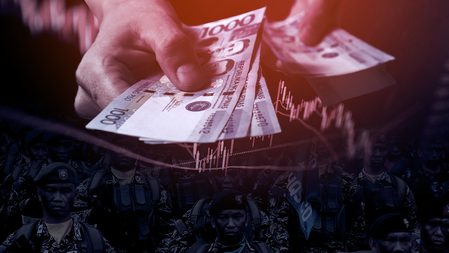
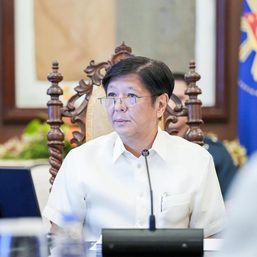





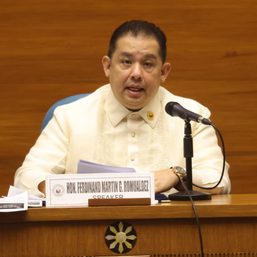






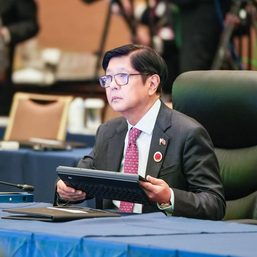

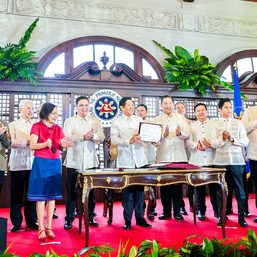
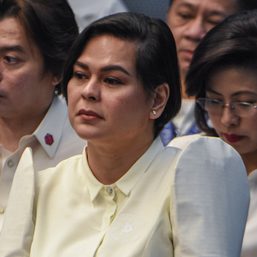





Thanks to Prof. JC Punongbayan’s enlightening article on the issue of the MUP Pension. First, his article points to the existing inequality between the two types of government personnel: the MUPs and the civilian. Second, the questions in the last paragraph of his article are very significant. The answer to both questions depends on the nature of our MUP’s brain. Those who will NOT “give up some of their hefty benefits and privileges for the sake of our strained public coffers – and, ultimately, the Filipino people” belongs to that traditional part of the Military Establishment which has “utak pulbura.” Will this part prevail? This remains to be seen.